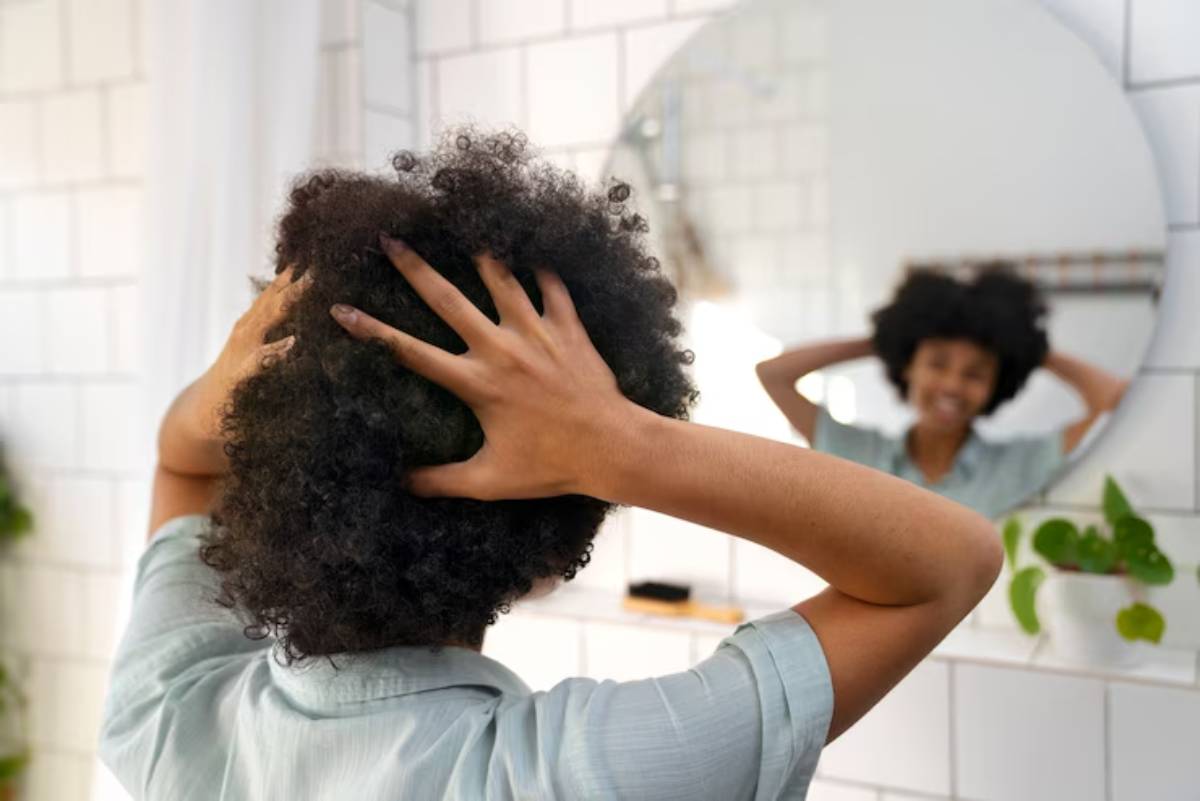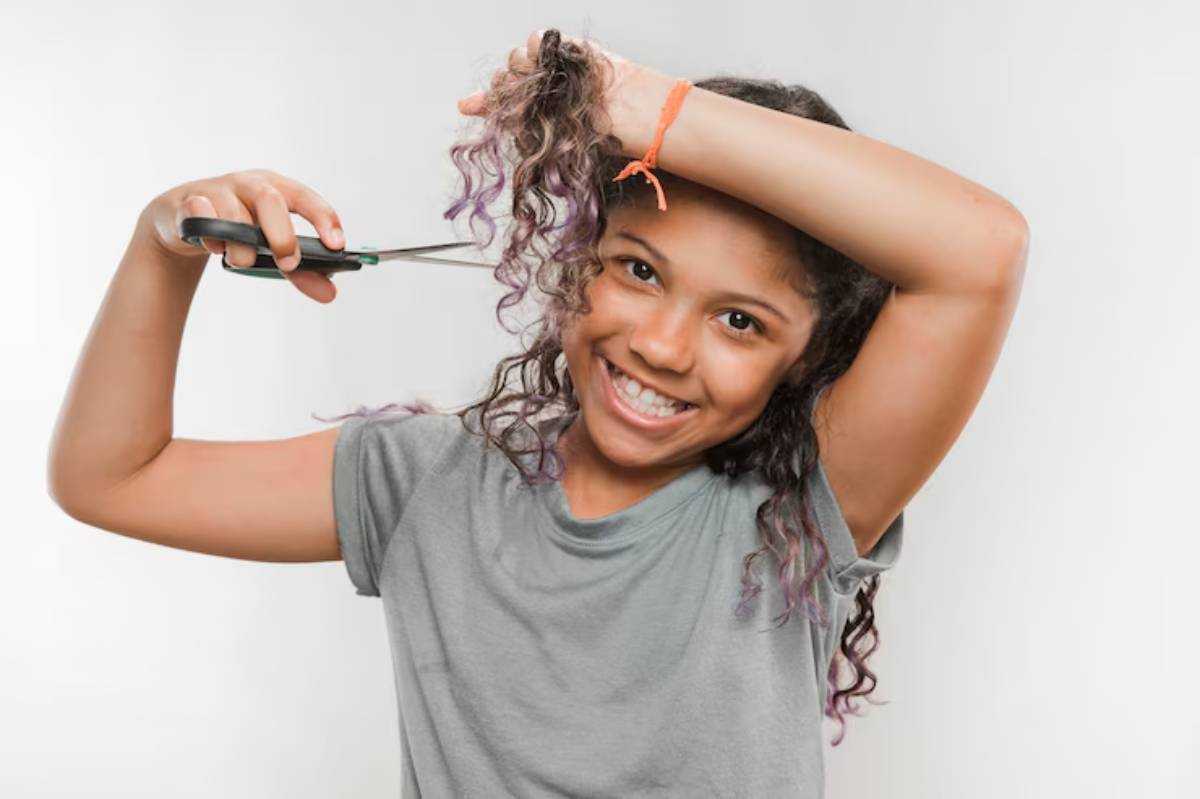
10 Curly Hair Myths You Need to Stop Believing
Curly hair is magical — but it’s also misunderstood. From old wives’ tales to outdated salon advice, curly hair has been surrounded by myths that do more harm than good. If you’ve ever been told to avoid brushing, never wash your curls, or that cutting curls ruins growth, you’re not alone.
These misconceptions can lead to bad habits, damage, and frustration for anyone trying to understand their curls, especially if they’re just starting their journey. That’s why we’re here to set the record straight.
In this guide, we’ll tackle 10 of the most common curly hair myths, explain where they come from, and break down the truth with science-backed, practical curl care advice. Whether you’re new to curls or just need a reality check, this list will help you treat your hair with the respect it deserves.
Myth 1: Curly Hair Shouldn’t Be Washed Often
The Misconception
“Curly hair is too dry — washing it will only strip it further.”
The Truth
While it’s true that curly hair is naturally drier than straight hair due to the shape of the strand, regular washing is essential to scalp health. The key lies in using the right products and techniques.
Use a sulphate-free, moisturising shampoo and co-wash (conditioner-only washing) in between wash days. For most curl types, washing every 5–7 days is healthy and sustainable.
Myth 2: You Can’t Brush Curly Hair

The Misconception
“Brushing will ruin your curl pattern.”
The Truth
Brushing dry curls aggressively? Yes, that’s a disaster. But brushing while hair is wet and conditioned can actually help detangle, distribute products evenly, and clump curls beautifully.
Opt for a wide-tooth comb or a detangling brush, and always start at the ends, working upward. Be gentle, and always detangle with slip (conditioner or leave-in).
See our guide on managing tangles and knots in young curls for step-by-step advice on detangling without the drama.
Myth 3: Curly Hair Doesn’t Grow
The Misconception
“My hair just won’t grow past a certain length.”
The Truth
Curly hair does grow — usually at the same rate as straight hair — but shrinkage and breakage can make it seem like it doesn’t. Shrinkage is natural and healthy, and a sign of elasticity. The real culprit for slow length retention is often breakage.
Focus on moisture, gentle handling, and regular trims to keep ends strong and retain length.
Myth 4: Oil Is the Best Moisturiser
The Misconception
“Just use coconut oil — it’ll keep your hair hydrated.”
The Truth
Oils seal in moisture, but they don’t create it. If your hair is dry and you apply oil alone, you’re just sealing in dryness.
Always apply oils like argan, avocado, or jojoba after using a water-based moisturiser or leave-in conditioner. That way, the oil helps lock in the moisture, not replace it.
Myth 5: You Must Follow the Curly Girl Method Exactly
The Misconception
“You’re not doing it right unless you follow every CGM rule.”
The Truth
The Curly Girl Method (CGM) has helped millions embrace their curls, but it’s not a one-size-fits-all rulebook. Some curls need sulphate shampoos occasionally, others thrive with a bit of protein.
Listen to your hair. If a method works for you, use it. If it doesn’t, tweak it. Healthy hair doesn’t need to be “CGM approved” — it just needs to be yours.
For flexible approaches, see building a simple curly hair regimen tailored to your hair’s real needs.
Myth 6: Cutting Curly Hair Makes It Grow Faster

The Misconception
“A good trim will speed up growth.”
The Truth
Hair grows from the scalp — not the ends. Cutting your curls won’t increase growth rate, but it will reduce breakage, improve shape, and help you retain more length over time.
Regular trims (every 10–12 weeks) keep your hair healthy, not longer overnight.
Myth 7: Frizz Means Your Hair Is Damaged
The Misconception
“My hair’s frizzy — it must be ruined.”
The Truth
Frizz isn’t always the enemy — in fact, it’s often just your hair seeking moisture from the air. Some frizz is natural and even beautiful. But chronic frizz can signal dryness or product imbalance.
Combat it with:
- Hydration (deep conditioners)
- Sealants (light oils or creams)
- Protective styles and satin accessories
Embrace frizz where you can, and tame it where you choose — but don’t villainise it.
Myth 8: Curly Hair Doesn’t Need Conditioner Every Wash
The Misconception
“If I’m not shampooing, I can skip conditioner too.”
The Truth
Even when you skip shampoo (for a co-wash or refresh), your hair still needs conditioning. Conditioner adds slip for detangling, helps rebalance moisture, and leaves your strands soft and resilient.
Always use conditioner after shampooing, and feel free to co-wash with conditioner alone when needed.
Myth 9: Only One Curl Type Is Beautiful
The Misconception
“Loose curls are the prettiest — tighter coils aren’t desirable.”
The Truth
Let’s be clear: all curl types are beautiful — from Type 2 waves to Type 4 coils. Texturism and curl envy have long shaped how society views “ideal” curls, but every curl pattern is valid, stylish, and worthy of care.
Celebrate your unique curl type, and teach others (especially young curlies) that their texture isn’t something to “fix” — it’s something to cherish.
Myth 10: Heat Styling Once in a While Won’t Hurt
The Misconception
“A blow-dry here and there won’t cause damage.”
The Truth
Even occasional heat can affect curl pattern if done improperly. High heat without protection can lead to heat damage, which is irreversible in natural hair.
If you choose to use heat, protect with a silicone-based heat protectant, use the lowest setting possible, and never flat iron soaking-wet curls.
If you love volume or stretch, consider diffusing with cool air or banding methods as gentler alternatives.
Conclusion: Set the Record Straight — and Your Curls Free
Myths can be powerful — but so is the truth. When it comes to caring for curly hair, misinformation can hold you back, waste your money, and even damage your hair. But with the right knowledge, tools, and mindset, you can build a routine that empowers you and supports your curls’ health and beauty.
From busting myths about growth to embracing frizz and variety, the real secret to great curls isn’t in magical products or viral routines — it’s in understanding, listening, and learning from your own hair.
So go ahead — question the old advice, embrace your texture, and let your curls flourish.


